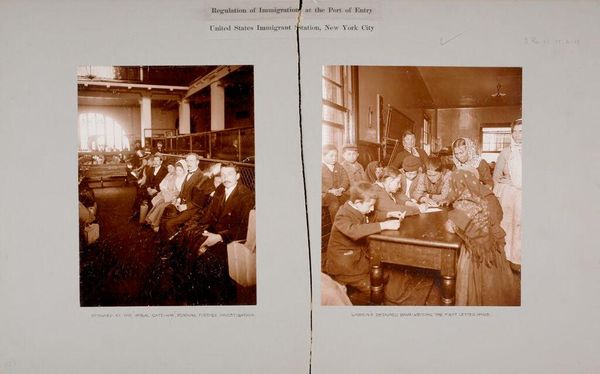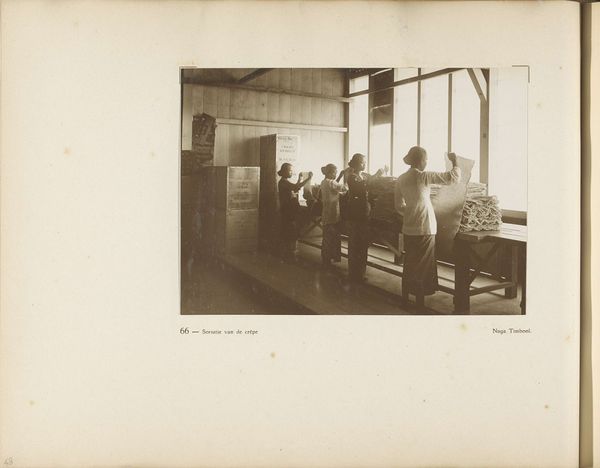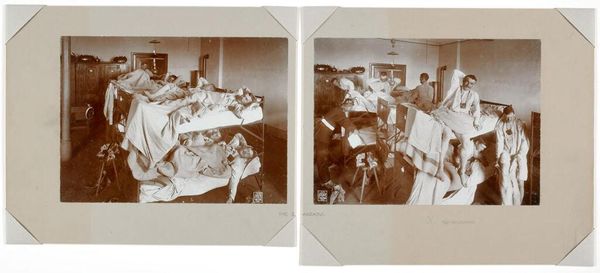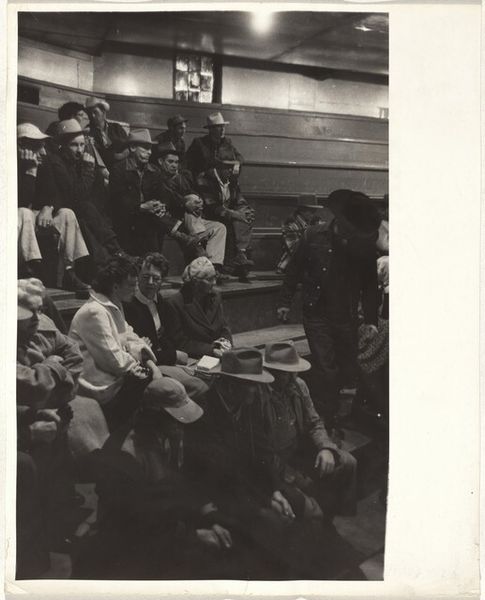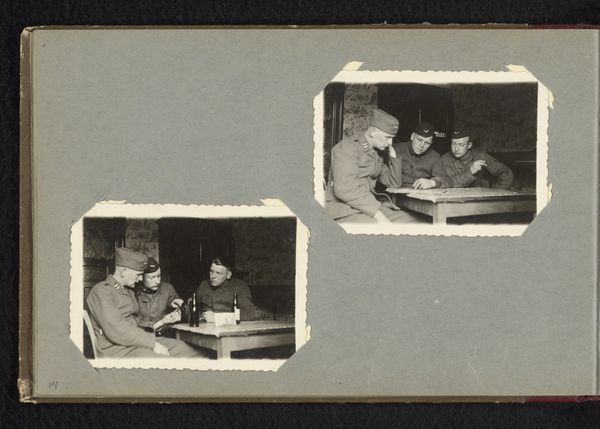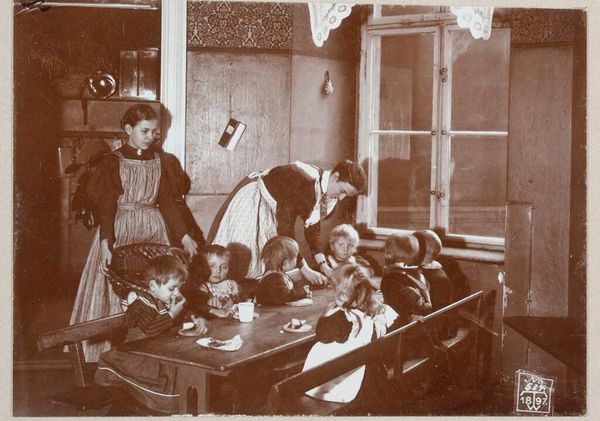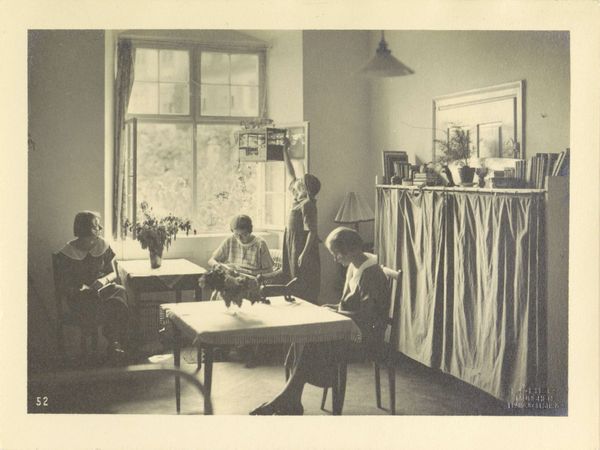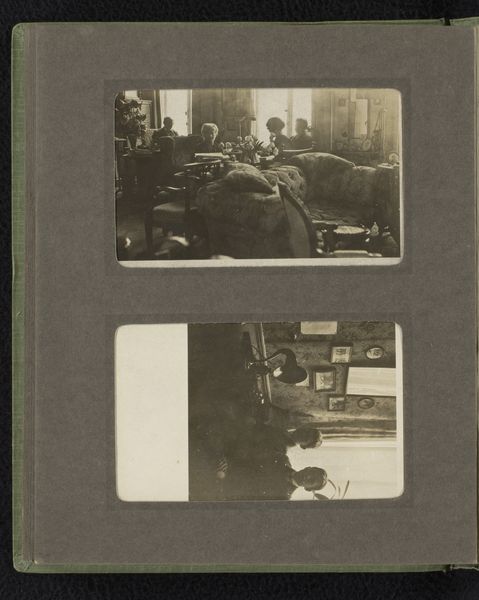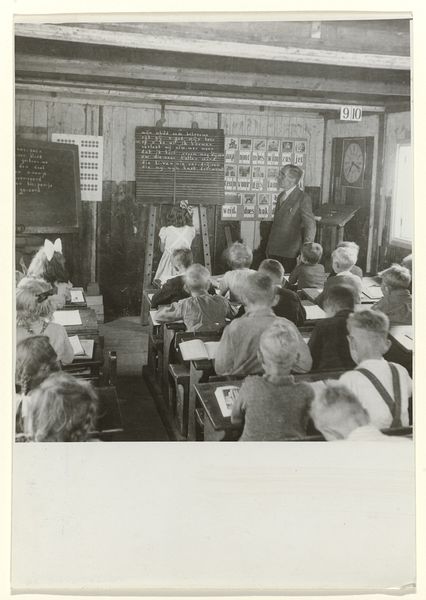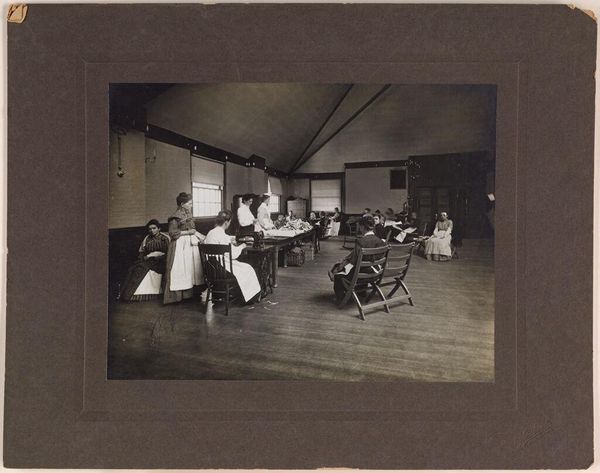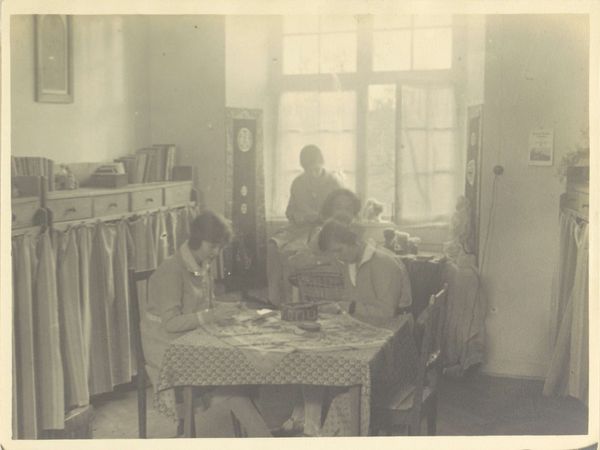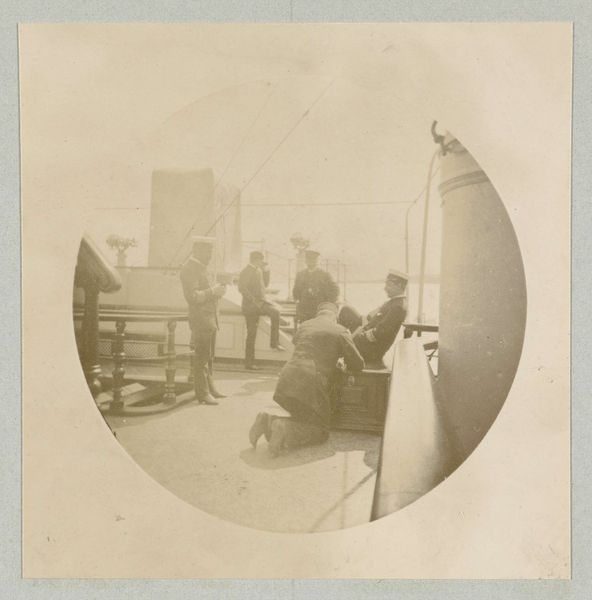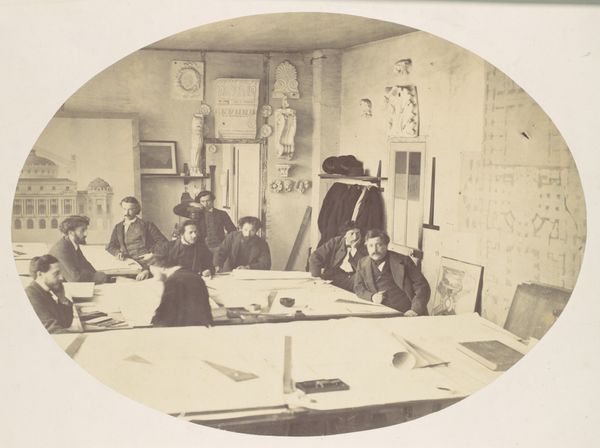
print, photography, gelatin-silver-print
#
print photography
# print
#
landscape
#
street-photography
#
photography
#
historical photography
#
gelatin-silver-print
#
realism
Dimensions: sheet: 20.2 x 25.2 cm (7 15/16 x 9 15/16 in.)
Copyright: National Gallery of Art: CC0 1.0
Editor: Here we have Robert Frank's "Restaurant scene--New Mexico," taken in 1955. It's a gelatin-silver print. What I find striking is the overall feeling of intimacy amidst a seemingly public space. What can you tell me about it? Curator: Notice how the figures are arranged, almost compressed into their booths? Consider that booth itself, the way it shapes and contains them. It echoes structures like confessionals, doesn’t it? Spaces designed for inward reflection, secrecy, even judgment. Think about the American West then, 1955: what cultural anxieties might be simmering beneath the surface? Editor: So the booth itself becomes a symbol? I see how that small, contained space changes the dynamic. What about the fact that we can't really see their faces? Curator: Precisely. Their faces obscured encourage us to project, to identify, or even judge. Consider too the brand names present, like "Budweiser." How do these familiar markers become stand-ins for American identity and ideals, even aspirations, but shown within this enclosed space of what might be internal contemplation, even disappointment? Editor: That makes sense. It's not just a random photo of people eating; it’s a commentary on the American experience. Curator: Exactly. It’s a scene capturing the nation’s dreams, shadowed with everyday reality. Frank isolates figures in encapsulated worlds, where even a quick meal at a restaurant encapsulates bigger themes of social expectations and inner thoughts. It becomes an archetypal tableau. Editor: This has really changed the way I see Frank's photograph. Thanks for highlighting all of the image's layers. Curator: My pleasure. By looking closer, we uncover the subtle visual vocabulary encoding social and personal experience.
Comments
No comments
Be the first to comment and join the conversation on the ultimate creative platform.
